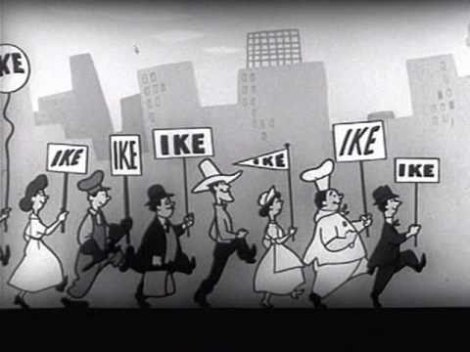Clinton’s 1992 campaign revolutionized the speed of response to attack ads, which were the focus of Bush’s first campaign. Clinton’s campaign ads focused on the economic issues of the time, which were important to many. Bush’s campaign attempted to release attack ads similar to 1988, but Clinton had a rapid response team that countered these ads and prevented them from hurting his campaign. Clinton’s biographical ad titled, “Journey” made him relatable to the working-class and gave Americans a personal history of his life. Quick response teams like the one employed by Clinton are now a necessity to every campaign.
Clinton ran for reelection in 1996 against the Republican nominee, Bob Dole. Clinton’s television spots had a higher production value in this campaign and focused on associating Dole with Gingrich, a republican that played a leadership role in the federal government shutdown right before the election. These advertisements blamed the federal government shutdown on the Republican Party and presented Dole in a way that made him look like part of the problem. Other advertisements used by Clinton focused on highlighting his first-term achievements and issues he wanted to approach if given a second term. Some advertisements, specifically one featuring children combined the negative and positive approach. These advertisements involved talking down Dole and promoting Clinton in a positive light. These ads are attack-ads of a less aggressive manner. Bob Dole’s campaign produced television advertisements that questioned Clinton’s character, but it wasn’t enough to concern Americans. Clinton’s advertisements touched on issues of major concern to the people and led to his reelection.
The campaigns of candidates in 2000 were more lighthearted than many before them. George W. Bush was running as the Republican nominee against Democratic nominee, Al Gore. A good economy and few major issues of interest for candidates to work with characterized this election year. The Bush campaign focused on promoting the image of him as a genuine and sincere man in contrast to Gore who was stiffer. Advertisements from both included positive images and music to create warmth. The Bush campaign was very concerned about keeping George as a man of good nature in the public’s eye and this influenced their attack ads. In an attack ad titled, “Really MD,” a female narrator makes sarcastic comments while television clips play of Al Gore speaking. The woman questions Gore’s trustworthiness in a comedic manner. The choice of using a woman’s voice to make the comments about Gore was likely to distance George from the harsh nature of the advertisement. Al Gore’s campaign focused on statistics and less emotion. In 2000 statistics and issues were not topics of concern and these advertisements did little to sell Gore to the public.
